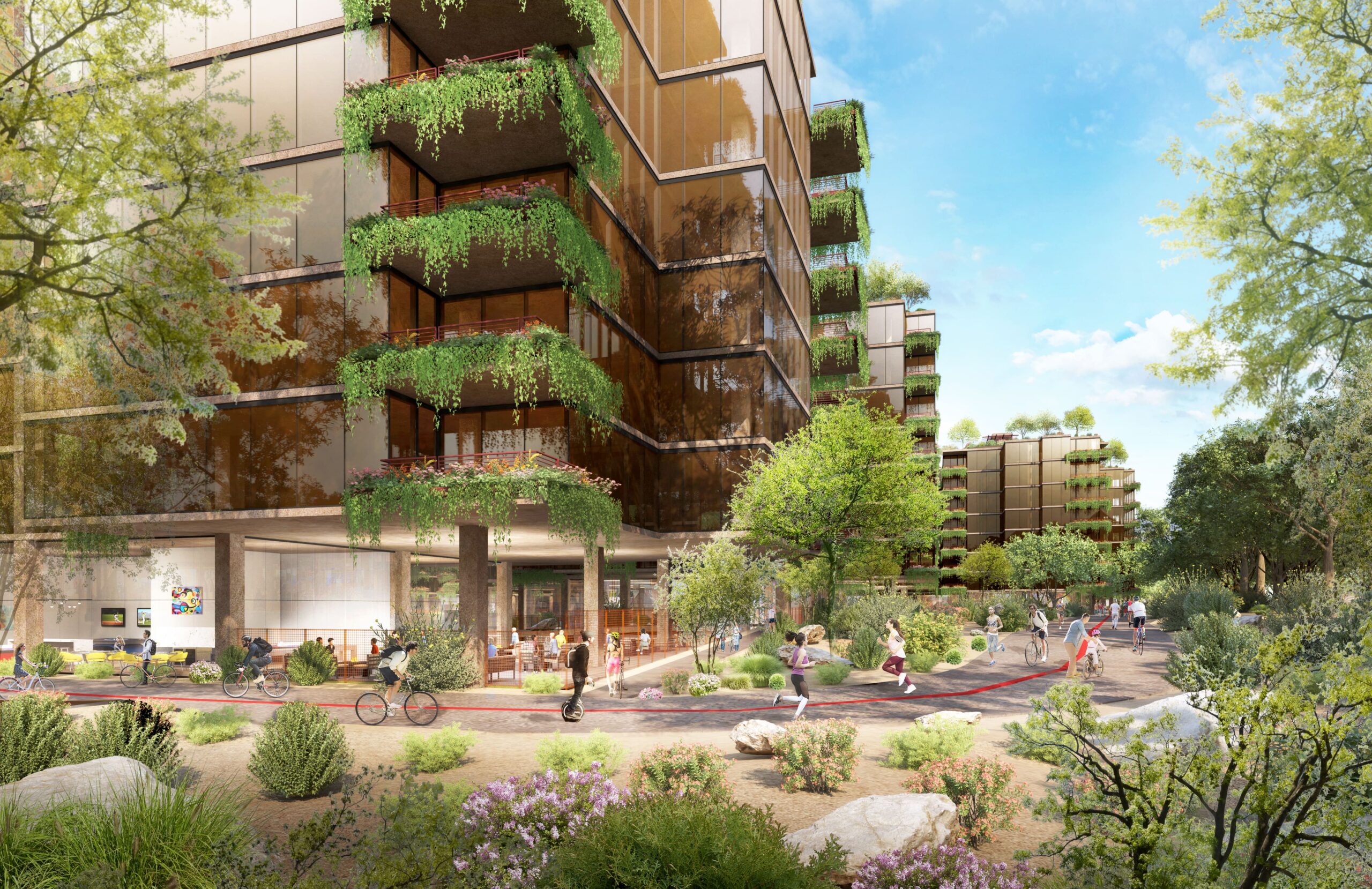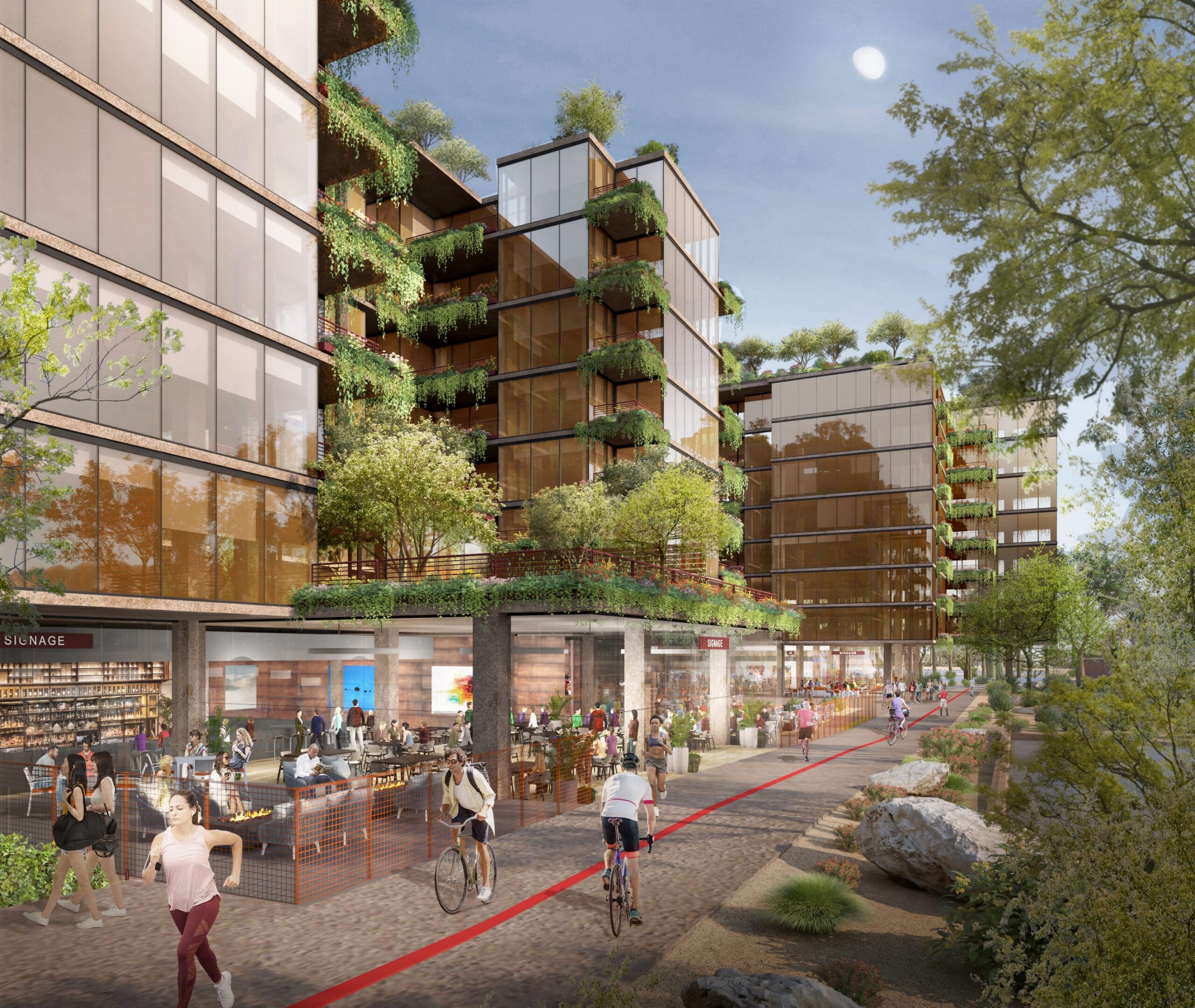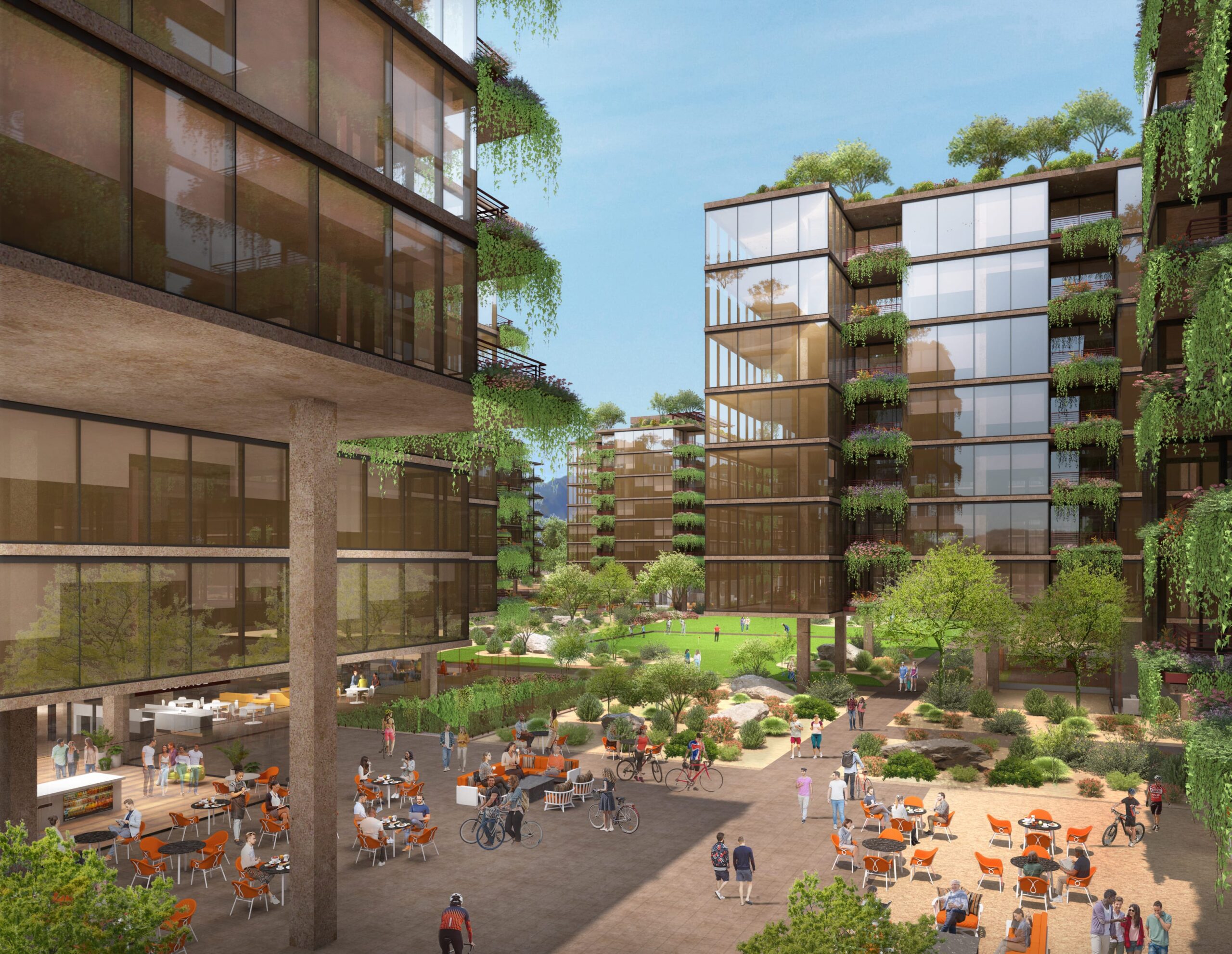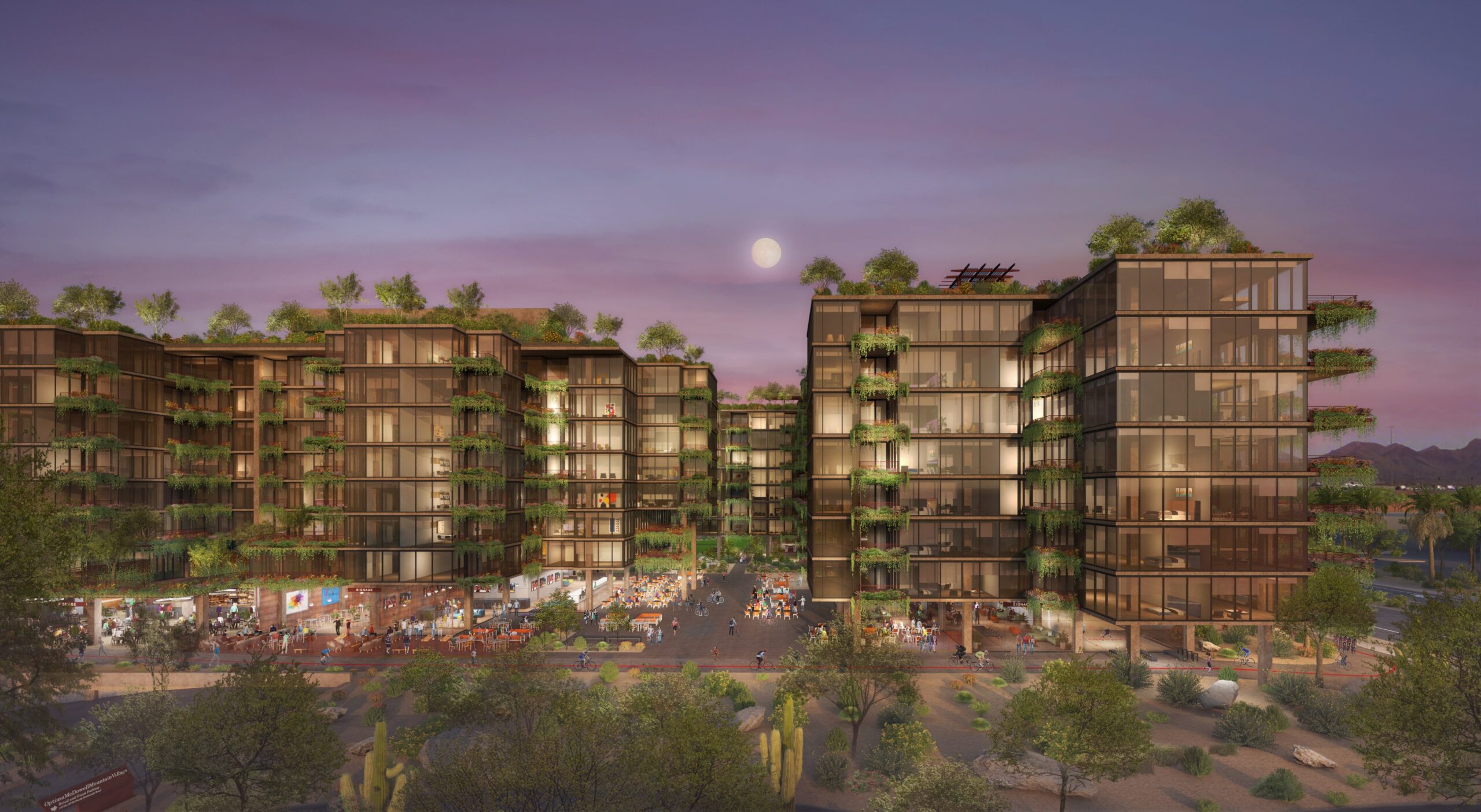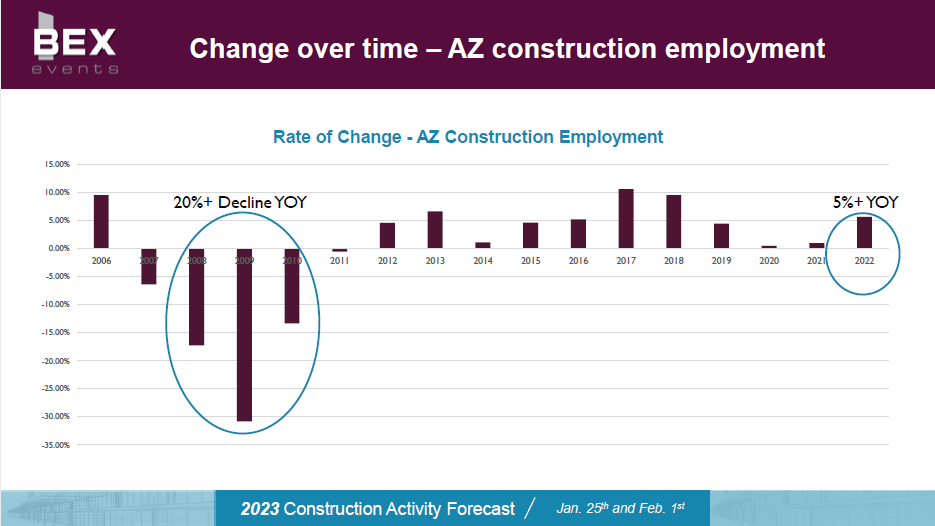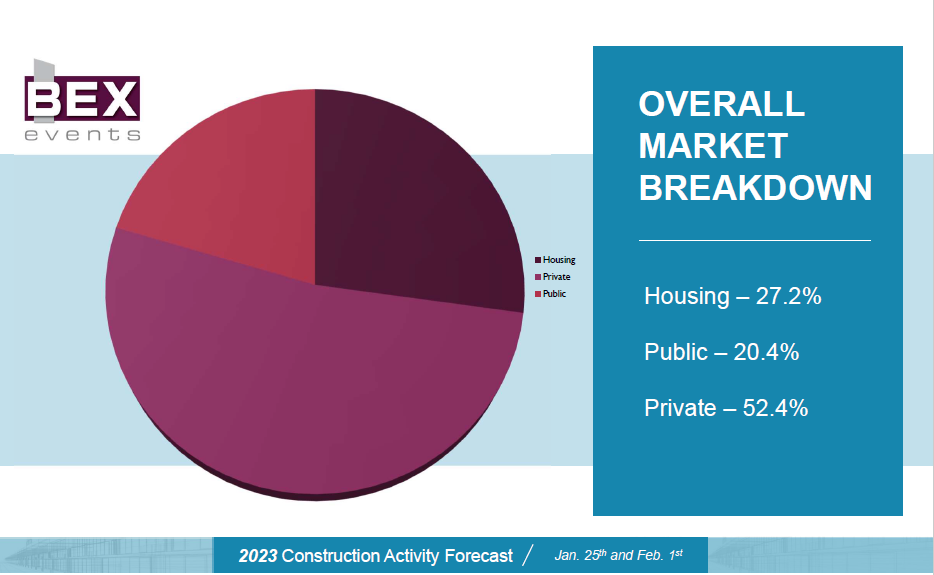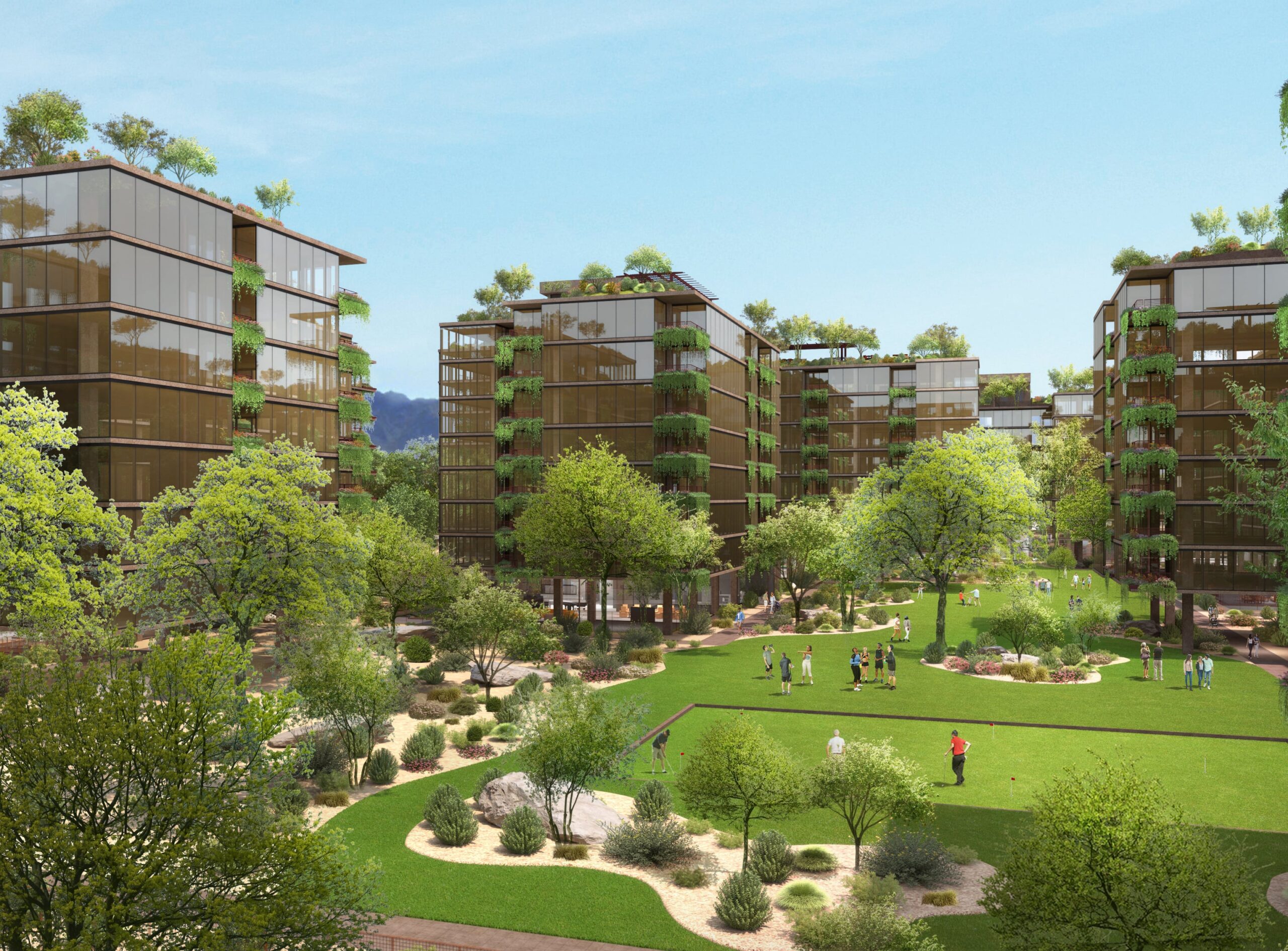Optima, an award-winning real estate development firm, recently announced plans to move ahead with its next Arizona residential development, Optima McDowell Mountain Village, in North Scottsdale after receiving the city’s approval for the $1-billion sustainable mixed-use community.
Breaking ground spring/summer 2023, the 22-acre site, located on the southeast corner of Scottsdale Road and the Loop 101 Freeway, is comprised of six concrete-framed, eight-story buildings that will include 1,330 luxury residences and 36,000 square feet of commercial and retail space. The development will be a mix of condominiums and apartments.
And it premiers a couple of special features.
Rainwater Harvesting and Water Conservation
Optima McDowell Mountain Village will be the largest private rainwater harvesting site in the United States, with an approximately 210,000-gallon storm water tank in a concrete vault at the lower level of the site. The tank will recapture water to repurpose for irrigation. Based on data from two other Optima communities in Scottsdale, the residences within the community are expected to use half as much water as the average Scottsdale multifamily residence and a quarter as much water as the average Scottsdale single-family home. Optima is also providing the City of Scottsdale with 2,750 acre-feet of water that will be deposited into the Scottsdale water system.
New Green Standards
The community will be the first project in Arizona to be built under both the new International Energy Conservation Code (IECC), which provides for an additional 9% energy savings over the previous code, and International Green Construction Code (IgCC). Both codes establish guidelines to create energy-efficient and sustainable buildings.
A few highlights of the sustainable features include 75% open space that will be a combination of artificial turf, xeriscape landscaping and native plants; high-performance mechanical systems, solar panels; 100% underground parking to mitigate the heat-island effect, and Optima’s signature vertical landscape system. The underground parking reduces the heat island effect by 9 to 12 degrees. The vertical landscaping system, with its self-containing irrigation and drainage, will enable a palette of vibrantly colored plants at the edge of each floor to grow both up and over the building. The integration of enhancements to the vertical landscape and architectural shading systems protects homes from the sun and creates additional privacy, while filtering the air and lowering ambient temperature.
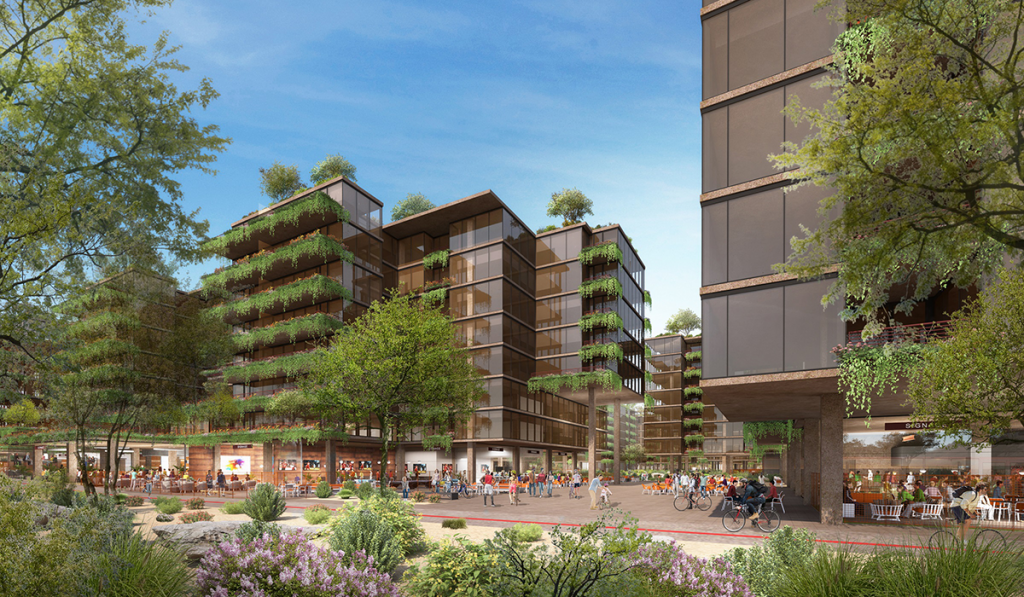 Designed in partnership with David Hovey Sr., FAIA, the six buildings feature undulating landscaped facades that echo the shapes of the McDowell Mountains with elevations that will create depth, shadow and texture. The outdoor terraces provided for every residence will be edged with trailing native plants cascading down the building and the colors of the desert will be incorporated throughout the community with bronze glass, railings and planters. Glass-enclosed, 15-foot-high ground-floor levels will feel utterly transparent.
Designed in partnership with David Hovey Sr., FAIA, the six buildings feature undulating landscaped facades that echo the shapes of the McDowell Mountains with elevations that will create depth, shadow and texture. The outdoor terraces provided for every residence will be edged with trailing native plants cascading down the building and the colors of the desert will be incorporated throughout the community with bronze glass, railings and planters. Glass-enclosed, 15-foot-high ground-floor levels will feel utterly transparent.
Amenity Rich
Each of the six buildings will contain a variety of state-of-the-art, health-based and resort-style amenities that include a rooftop deck with a 50-meter Olympic-length swimming pool; a sauna, spa and cold plunge; a running track that will follow the perimeter of the roof; and more, along with spectacular views of the surrounding desert landscape and mountains. The ground-floor will feature spacious, well-appointed lobbies; a fitness center and yoga studio; a residents’ club with game room and theater; an outdoor pickleball arena; indoor and outdoor kids’ play spaces; a dog park and pet spa; a business center and conference room; and more.
The convenient location is just a five-minute drive to the shopping, dining and entertainment destinations of Scottsdale Quarter and Kierland Commons, while the proximity to major highways and freeways will provide residents with easy access to the surrounding Valley. In addition, the development will feature a bicycle and pedestrian path around the perimeter of the development that will connect to the bicycle and multi-use paths of the City of Scottsdale Bicycle Master Plan.
Optima McDowell Mountain Village will be Optima’s most sustainable project to-date and will utilize the kind of architectural detail that characterizes Optima’s Arizona projects, representing the next evolution of Optima’s design and construction.
David Hovey Jr., AIA, is president and COO of Optima, Inc. and Optima-related entities. He oversees all company entities and business units, including development, architecture, construction, land acquisition, entitlements, corporate finance, sales and marketing, investor relations and asset management.
Did You Know: Optima McDowell Mountain Village will be the largest private rainwater harvesting site in the United States, with an approximately 210,000-gallon storm water tank in a concrete vault at the lower level of the site.
Read more on In Business
Visit Optima McDowell Mountain Village for more details
